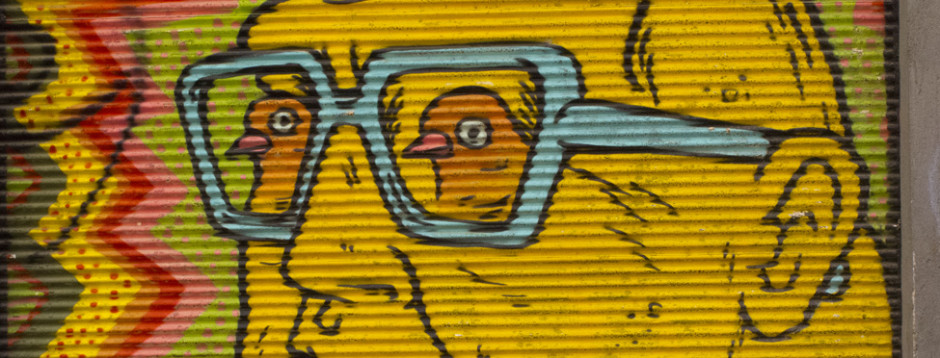Published August 30, 2023 by Melissa Stern on Artspiel

Photographer , Carnival Mexico 2017
Phyllis Galembo Photographer, Carnival Mexico. Fujiflex print. 30 x 30 2017.
The Kleinart James Center in Woodstock, New York, is currently presenting a very ambitious and interesting photography exhibition. Entitled Here Now: Contemporary Photographers of the Hudson Valley, the show presents 17 artists representing a portion of the many photographers working in this geography. Organized by curator Jane Hart, the show offers a wide range of aesthetic visions and techniques.
The show is loud. That is, there is a lot of color. In fact, all the work presented is color photography or video. It’s an interesting curatorial choice, and though quite strong, I did occasionally long for a moment of black-and-white respite.
The exhibition is loosely organized around several themes. Nature and the world (natural and manmade), identity (race, gender) and storytelling. And though these themes don’t connect overall, the show leaves the door wide open for viewers to relate and gravitate to the kinds of photographic works that speak to them. I will discuss the pieces that spoke to me.

In a novel and totally appealing installation, over 100 photographs by Tim Davis are spread out over a large farm table, and the public is encouraged to paw through them. I‘ve never seen photographs displayed this way, and it was a wonderful change of paradigm. At the exhibition’s opening, the table was thronged with people delightedly going through the piles. They are the culmination of Davis’s journey through 300 towns in the Hudson Valley, shooting people, places, and things. They make for a potent document of life in the Hudson Valley. The photos themselves are terrific. I was tempted to tuck a few under my arm and sneak out of the show.

Carolyn Marks Blackwood is represented by two very large photographs from her “Story Series.” The size is relevant at 62 x 62 inches; they are a commanding presence. The delicate color and tone of the interwoven tree and branches become magical when printed in human size. Each of her two photographs in the show has a brief caption, the one line of a short story that unlocks the key to the narrative.


In a different Universe altogether are the odd and dystopian works by Oliver Wasow. It’s hard to know if they are totally fabricated by software techniques or if they are augmented “real” photos. Wasow is long known for his immersion in new non-lens-based forms of creation. Twelve 13 x 17 framed photographs are arranged in a grid. Viewed altogether as they are installed here, they read as a portrait of an ominous future. Scarred and desolate landscapes, dilapidated buildings, destruction, and desolation. Each is suffused with a strange, surreal color sense appropriate for the world that they depict. They are both beautiful and terrifying. Perhaps a prescient vision of our future.

I have long been a fan of Phyilis Galembo’s portraits of people in masks and costumes. She has published a number of excellent books that border on ethnographic documentation of both non-Western societies and American rituals. I was thrilled to see two of her portraits of people in contemporary Mexican ritual costumes. They are vibrant and delicious. Rich, saturated color amplifies the tangle of objects and images that adorn each of the people presented in formal frontal poses. The formality of the images is a nice counterpoint to the delirious nature of the costumes.
Each of the 17 photographers showcased in this exhibition has a strong and deeply personal vision. Though not a comprehensive survey of Hudson Valley photo-based artists (that would fill a museum), this is a thoughtful and worthy exhibition to visit- yet another demonstration of the vibrant visual art scene in the mid-Hudson Valley.
Here Now: Contemporary Photographers of the Hudson Valley. Woodstock Byrdcliffe Guild’s Kleinart James Center for the Arts. 36 Tinker Street, Woodstock, NY. The exhibition runs through September 24, 2023.
All photos courtesy of the artist.














































 Each year The Tate Britain commissions a large-scale art installation for the iconic Duveen Galleries at the museum. This is a vast space, an art-filled hall, more than a typical gallery that winds its way down the center of the museum on the first floor. This year they tapped the Guyanese-British artist Hew Locke whose visual musings on migration, history, national identity and ritual are well known in the British art world. Locke has long worked these themes, but never on such a scale. It is a wildly ambitious vision that embraces his interests and presents a fully developed Universe.
Each year The Tate Britain commissions a large-scale art installation for the iconic Duveen Galleries at the museum. This is a vast space, an art-filled hall, more than a typical gallery that winds its way down the center of the museum on the first floor. This year they tapped the Guyanese-British artist Hew Locke whose visual musings on migration, history, national identity and ritual are well known in the British art world. Locke has long worked these themes, but never on such a scale. It is a wildly ambitious vision that embraces his interests and presents a fully developed Universe.







